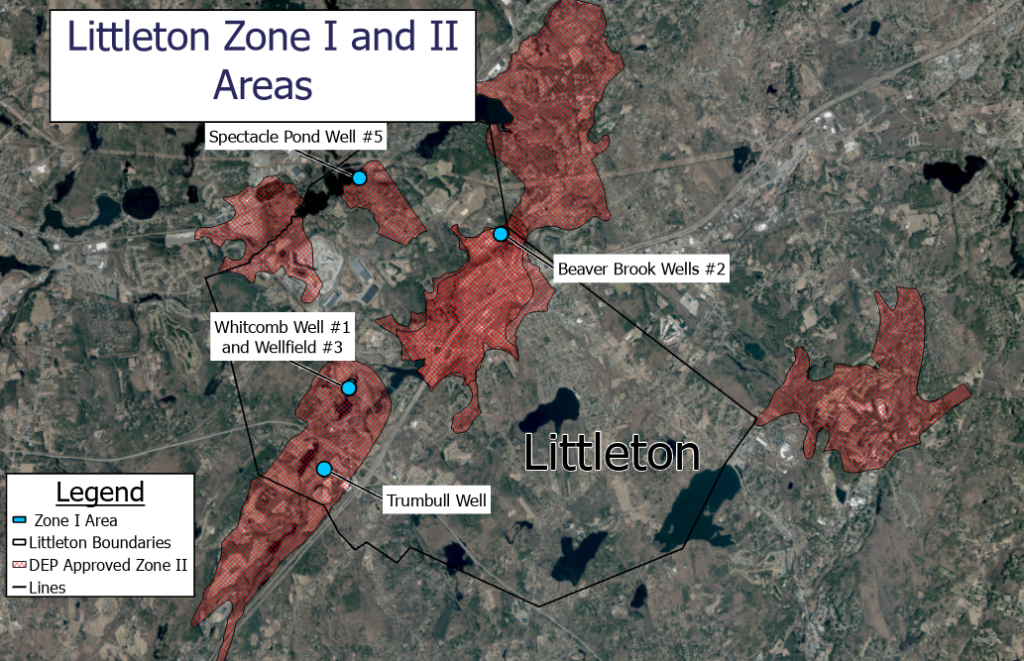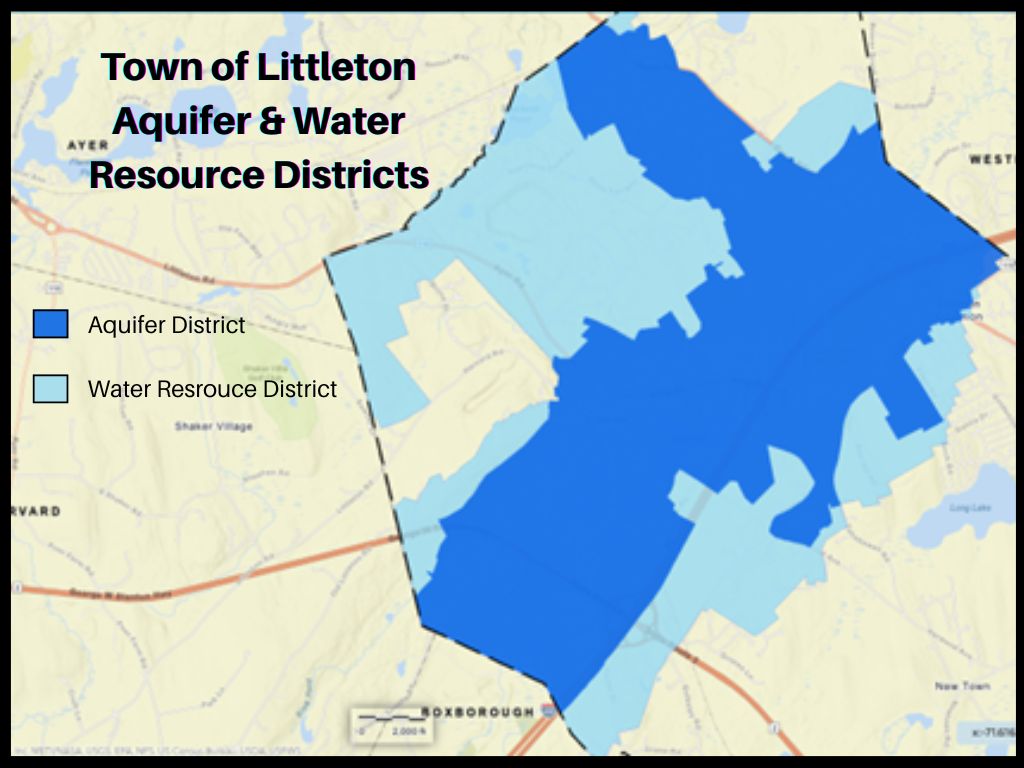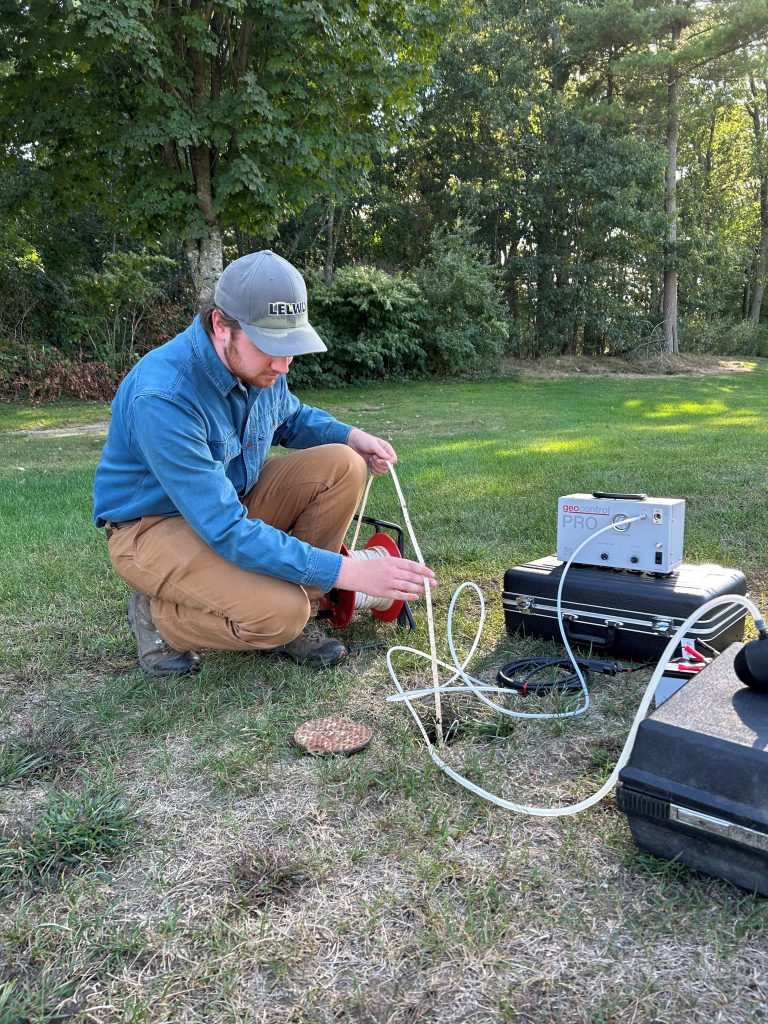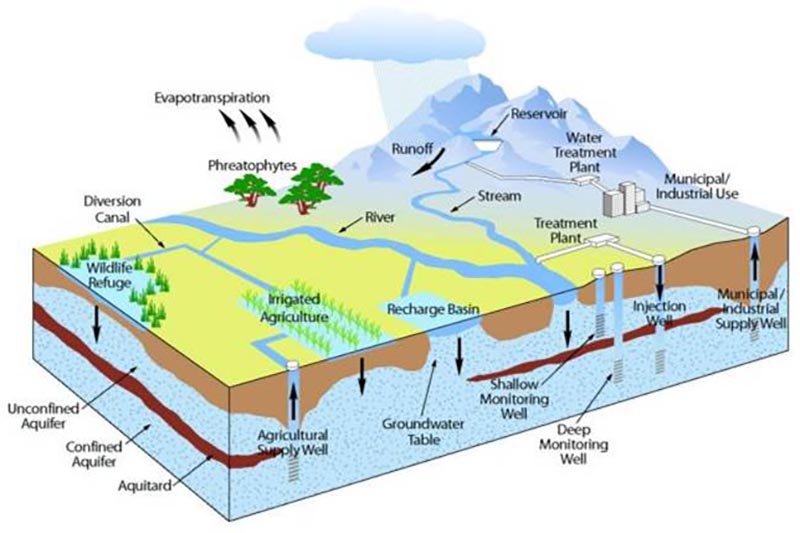Protecting Our Water Source
The Littleton Water Department is committed to delivering clean, reliable water. The LWD and the Town of Littleton integrate land-use planning, groundwater monitoring and environmental audits in a comprehensive aquifer and watershed protection program.
The Town’s Aquifer and Water Resource District zoning bylaw restricts the land uses permitted near drinking water wells. LWD’s environmental analysts regularly test 150 monitoring wells on 40 properties to confirm water quality.
Littleton’s drinking water is regularly tested for contaminants and found to be a higher quality than required by state drinking water standards. For more information, see the 2024 Annual Drinking Water Quality Report.
Littleton's Drinking Water Wells
LWD pumps water out of underground aquifers and into its distribution system at these locations:
- The Whitcomb Avenue wells.
- The Spectacle Pond well.
- The Beaver Brook wells.
- The new Trumbull well on Taylor Street is under development.
What's an Aquifer?
An aquifer is a layer of sediments or rocks under the surface that is capable of holding large amounts of water. Think of a jar filled with pebbles. Pour in water, and it fills the gaps between the rocks.
Rain fills the aquifers by seeping through soil and permeable surfaces, slowly entering the aquifer – a process known as groundwater recharge. Lakes, rivers and wetlands also contribute to recharge.
Groundwater moves not only down deeper into the earth, but it also flows across the soil layer. As drinking water wells pump water out of the aquifer, groundwater flows toward the wells to replenish the supply. This groundwater flow can take a long time to reach the wells.
Aquifer water quality is only as good as the groundwater recharge supplying it. Water can transport substances and chemicals it
encounters. While water does get somewhat “filtered” through natural processes on its journey to and through the aquifer, secondary treatment is necessary in LWD’s treatment plants.
Zone Defense: Protecting Sources
Prevention is the best way to keep groundwater free of contamination.
Littleton’s groundwater wells are protected by Zones I, II, and III. The zones surround the wells, with Zone I the most restrictive. Zone I is a defined distance from the water source, and Zones II and III are set by the area’s impact on the aquifer. (See the map for Zone I and II locations.)
Zone I: A 400-foot radius around the LWD groundwater wells. LWD owns the land and no trespassing is permitted.
Zone II: Not a fixed radius, Zone II is the area that will transmit groundwater to the wells when there is no precipitation recharge for three months. Littleton’s bylaws establish an Aquifer District to restrict allowable uses in order to protect groundwater. The Aquifer District encompasses the Zone II areas. (The Aquifer District is shown in dark blue on the nearby map.) The bylaw prohibits activities within the Aquifer District, including the storage of hazardous waste, road salt and treatments, petroleum products, chemicals and fertilizer. It also prohibits automobile sales, junkyards, landfills, truck terminals, and deep earth removal.
Zone III: It is areas outside of the Aquifer District that also contribute to aquifer recharge. Zone III is also called the Water Resource District (shown in light blue on the nearby map). Generally, a special permit is required to authorize certain activities in this zone. Approved developments in this zone are typically required to install water monitoring wells as a condition of the special permit.
Groundwater Monitoring Program
In Littleton, 144 groundwater-monitoring wells are located on over 40 properties. They are maintained and sampled by the water department to monitor for the presence of contaminants and to track pollution trends across the monitoring well sites.
Monitoring wells, as opposed to production wells, are used to extract samples for quality testing. They are a window into aquifer water quality.
LWD’s environmental staff annually samples the wells and sends it for testing at qualified laboratories. Typically, water is sampled for general chemistry parameters like pH, conductivity, temperature, turbidity, etc.
Samples may be analyzed for mineral content, nitrogen species, metals and heavy metals, and volatile organic compounds. Per state water quality standards, water samples may also be tested for specialty pollutants like per- and polyfluoroalkyl substances (PFAS), perchlorate, bacteriology, and more.
Environmental Audits
Water Department environmental personnel are authorized to conduct environmental audits of regulated facilities to ensure compliance with Littleton’s Aquifer and Water Resource Protection Bylaws and other state and federal regulations. These typically consist of a walk-through inspection to assess the environmental liability of products at the site, with recommendations offered for safe storage and handling procedures.





